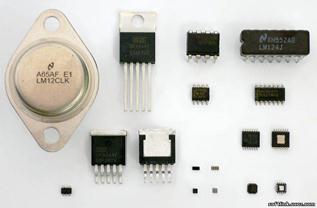Edit] The Coupigny synthesiser and Studio 54 mixing desk
Pierre Schaeffer at the Studio 54 desk adjusting a Moog, the Coupigny is in the row below. After the longstanding rivalry with the "electronic music" of the Cologne studio had subsided, in 1970 the GRM finally created an electronic studio using tools developed by the physicist Enrico Chiarucci, called the Studio 54, which featured the "Coupigny modular synthesiser" and a Moog synthesiser with VCA (Gayou 2007, 208). The Coupigny synthesiser, named for its designer François Coupigny, director of the Group for Technical Research (Battier 2007, 200), and the Studio 54 mixing desk had a major influence on the evolution of GRM and from the point of their introduction on they brought a new quality to the music (Teruggi 2007, 220). The mixing desk and synthesiser were combined in one unit and were created specifically for the creation of musique concrete. The design of the desk was influenced by trade union rules at French National Radio that required technicians and production staff to have clearly defined duties. The solitary practice of musique concrete composition did not suit a system that involved three operators: one in charge of the machines, a second controlling the mixing desk, and third to provide guidance to the others. Because of this the synthesiser and desk were combined and organised in a manner that allowed it to be used easily by a composer. Independently of the mixing tracks (twenty-four in total), it had a coupled connection patch that permitted the organisation of the machines within the studio. It also had a number of remote controls for operating tape recorders. The system was easily adaptable to any context, particularly that of interfacing with external equipment (Teruggi 2007, 219). Before the late 1960s the musique concrete produced at GRM had largely been based on the recording and manipulation of sounds, but synthesised sounds had featured in a number of works prior to the introduction of the Coupigny. Pierre Henry had used oscillators to produce sounds as early as 1955. But a synthesiser with parametrical control was something Pierre Schaeffer was against, since it favoured the preconception of music and therefore deviated from Schaeffer's principal of ‘making through listening’ (Teruggi 2007, 219). Because of Schaeffer's concerns the Coupigny synthesiser was conceived as a sound-event generator with parameters controlled globally, without a means to define values as precisely as some other synthesisers of the day (Teruggi 2007, 219–20). The development of the machine was constrained by several factors. It needed to be modular and the modules had to be easily interconnected (so that the synthesiser would have more modules than slots and it would have an easy-to-use patch). It also needed to include all the major functions of a modular synthesiser including oscillators, noise-generators, filters, ring-modulators, but an intermodulation facility was viewed as the primary requirement; to enable complex synthesis processes such as frequency modulation, amplitude modulation, and modulation via an external source. No keyboard was attached to the synthesiser and instead a specific and somewhat complex envelope generator was used to shape sound. This synthesiser was well-adapted to the production of continuous and complex sounds using intermodulation techniques such as cross-synthesis and frequency modulation but was less effective in generating precisely defined frequencies and triggering specific sounds (Teruggi 2007, 220). The Coupigny synthesiser also served as the model for a smaller, portable unit, which has been used down to the present day (Battier 2007, 200).
|






